On the Way to Rorbu #15 in Lofoten
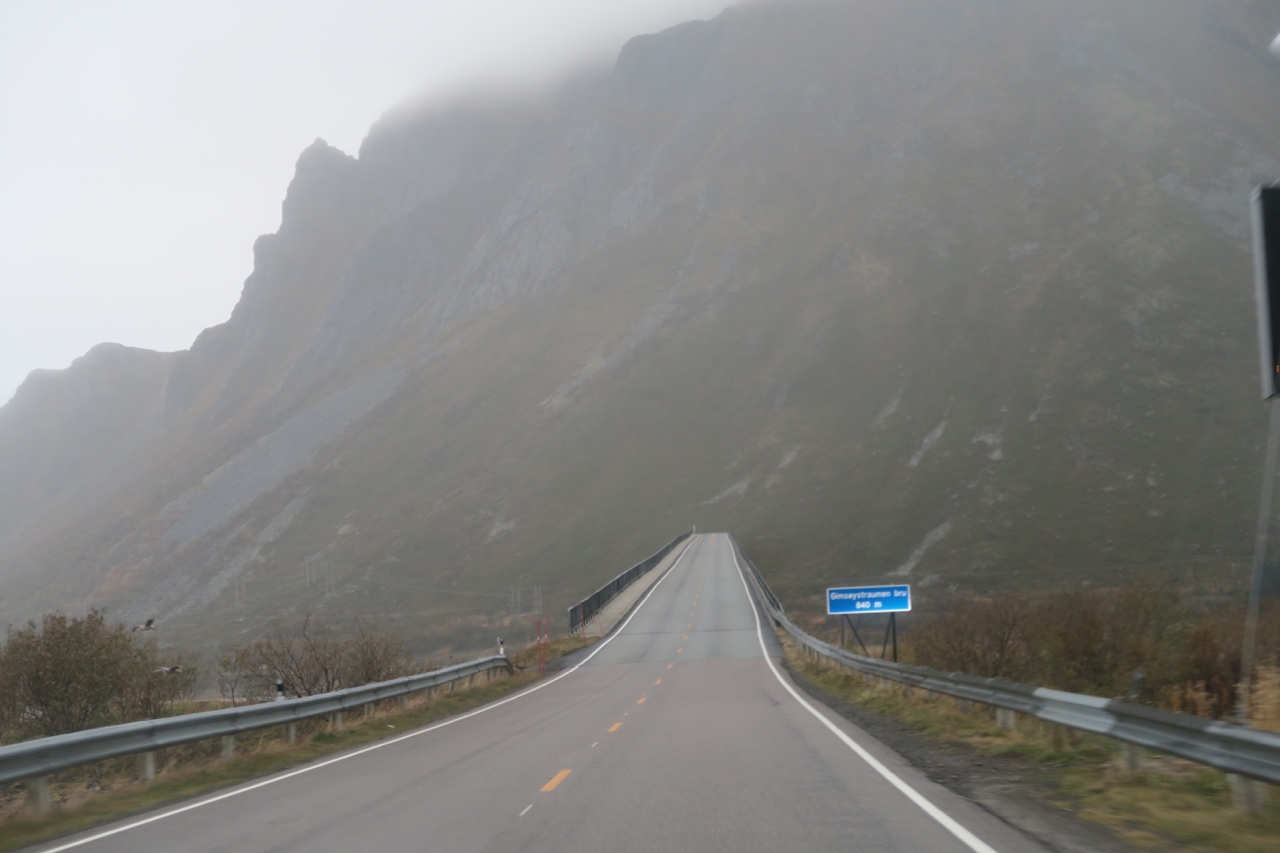
Getting There in Austrian Business Class
Seeing the Aurora Borealis (Northern Lights)
The Road to Lofoten is Paved with Postcards
On the Way to Rorbu #15 in Lofoten
Spending the Night in a Traditional Rorbu
Exploring the Picturesque Lofoten Islands
A Night in a Traditional Rorbuer
Radisson Blu Polar Hotel (only 800 miles from the North Pole!)
Longyearbyen – the World’s Northernmost City
Crossing the Isfjord in a Boat
Barentsburg Mining Town
Face to Face with Esmark Glacier
By the time we arrived in Lofoten the weather had gone from dreary to rainy, and as we drove it progressively got worse. The rain on the windows blurred the postcard picture scenery like one of Bert’s chalk drawings in Mary Poppins.

We passed VÃ¥gan Church, which stands on a site that has had a church there since the 12th century. It looked colorful and the roof shiny through the raindrops.

Visibility of the distant mountains grew poor, and as I drove my husband looked up rorbuer online and made calls to see which ones were available for the evening. There were plenty to choose from and since we were in an off-season there wasn’t the concern that they’d be full. He found success with just a few tries, and said he thought we’d love the location. We continued on, noticing that the wind had kicked up as well.
We passed the Viking Museum, which was easy to spot because of its shape. It resembled a huge upside-down boat.
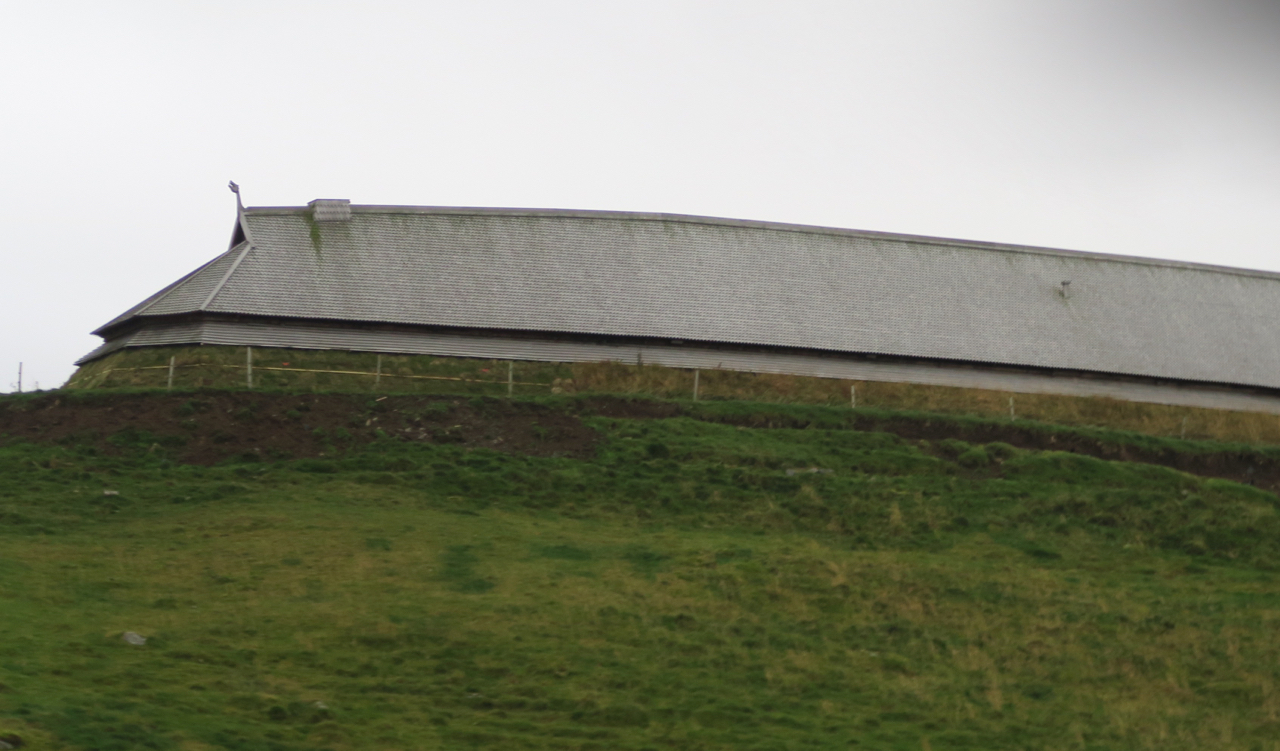
Based on the excavation and subsequent reconstruction of of a Viking chieftain’s village dating back to 500 AD, it is also the largest building ever to be discovered from the Viking period in Norway, and the reconstruction/museum that opened in 1995 includes replicas of two ships, a blacksmith’s forge, and the reconstructed Chieftain’s house. We kept driving but the museum looked interesting.
I started noticing some of the traditional grassy roofed houses, and I saw horses covered in blankets to keep them comfortable in the weather though most fields were bare of animals.
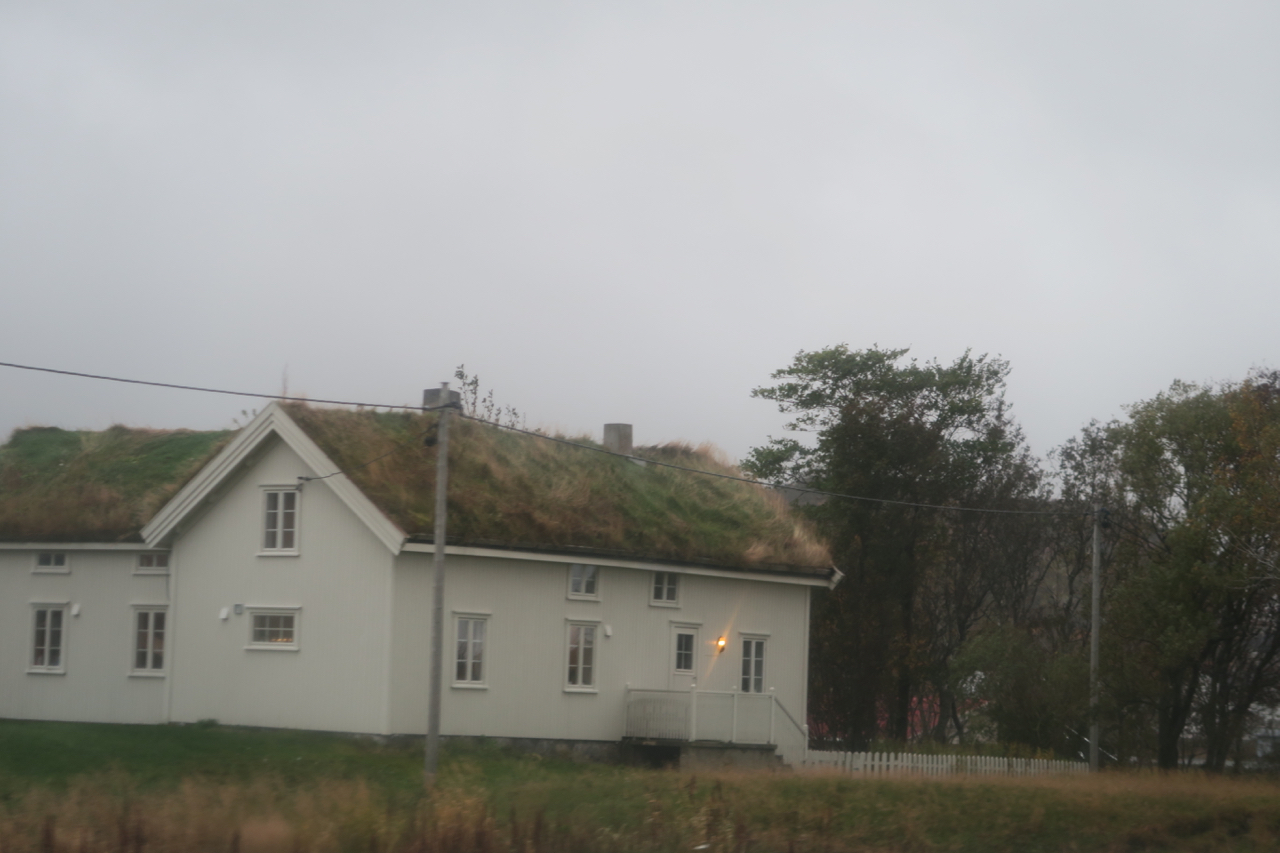
In Norwegian the grassy roofs are called “torvtak” meaning turf roof. In days past, it was a common roof for log houses to have. Birch bark is placed on top of roof boards, and sod laid down upon that. The sod acts as insulation, and the birch bark keeps the roof waterproof. Today the grass roofs are built as a nod to tradition, rather than out of necessity for lack of other building materials.
We passed into the town of Leknes, which was full of coastal wetlands. The scenery was still beautiful even with the dark skies and rain, but I wondered how it would look if the sun was shining.

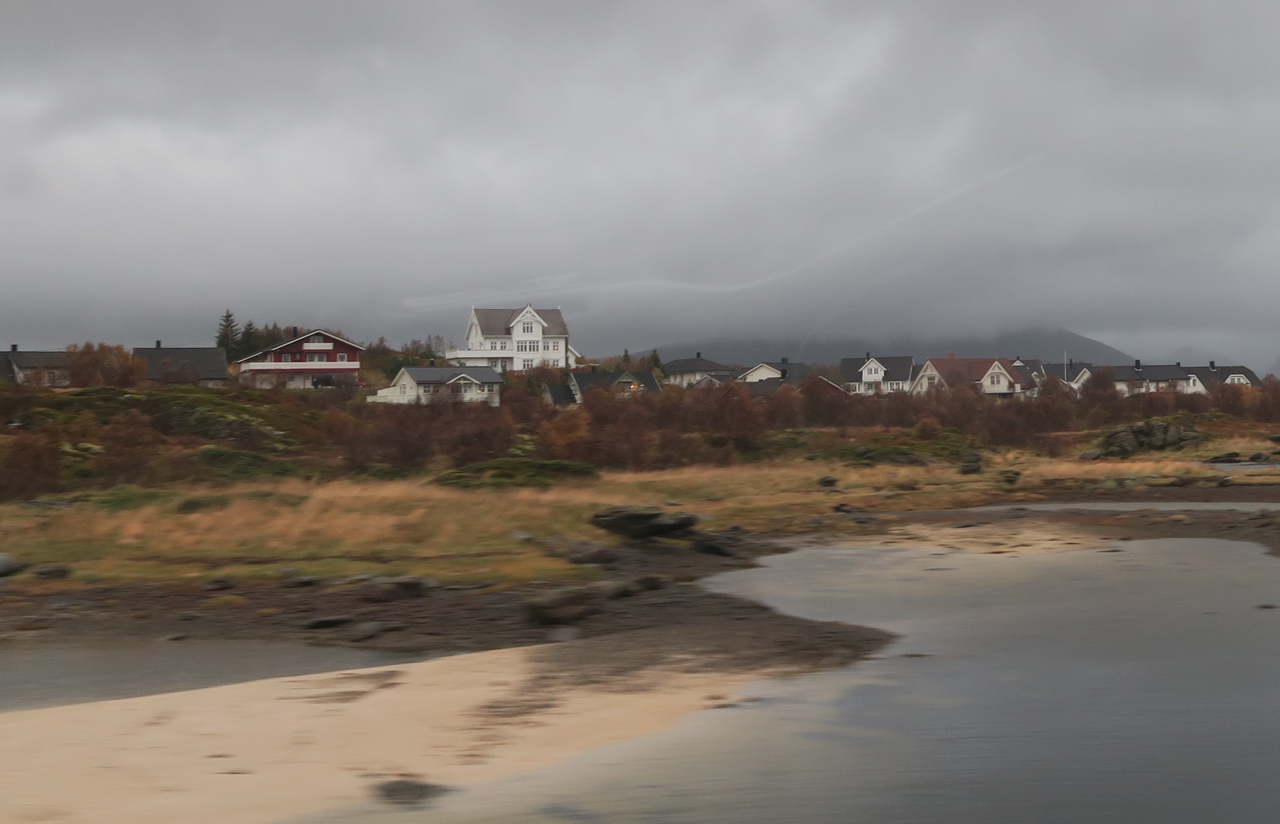
Using GPS I spotted the Kraemmervika Rorbuer Resepsjon sign through the rain.
Even though there are regular hotels in Lofoten, I had wanted more traditional accommodations hence the rorbuer. The rorbuer are traditional wood cabins that hard working fishermen used seasonally. Built half on land and half on stilts over the water, the brightly colored huts offered easy access to fishing vessels. Nowadays, the rorbuer are rented out by tourists looking for fun and unusual accommodations. With full kitchens and several bedrooms, the cabins are comfortable for families, and offer great views over the water. I was really looking forward to my stay in one, even if the weather was a bit poor.


The light over the reception door was like a beacon in the rain, and was a welcome sight.
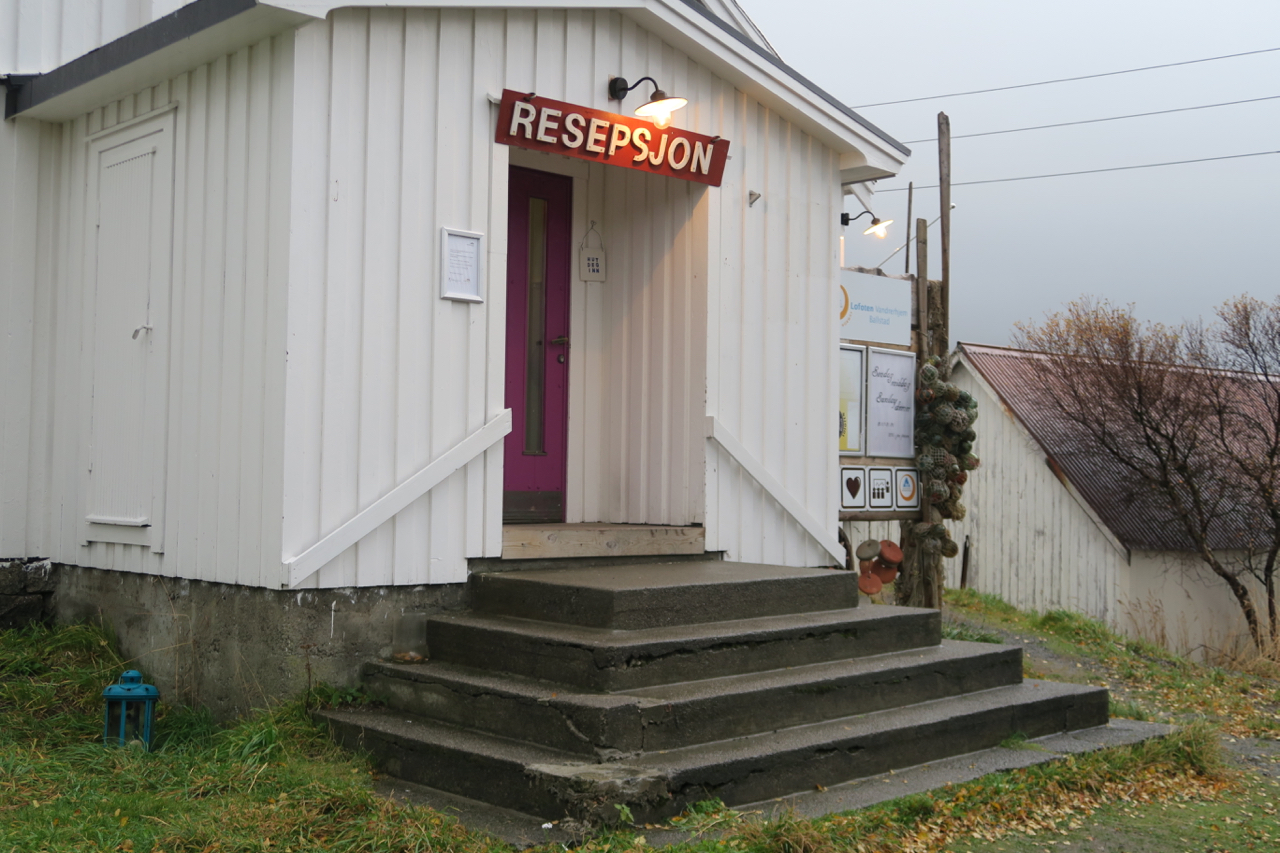
Stepping up to the door, I saw a sign that said “Hut Deg Inn†which means “Get inside now!â€. There was no need to knock and I didn’t need to be asked twice, since it was cold and rainy outside.

The building was from the 1800’s but the floorboards weren’t creaky, and it was warm and cozy inside. We were just stopping in to get set up with our cabin, but there was a communal room that guests are welcome to hang out in.

Even though the room was empty save for one guy tapping away on a laptop in the corner, I could imagine that in the summertime the room would be busier with families hanging out after a day of exploring the islands.

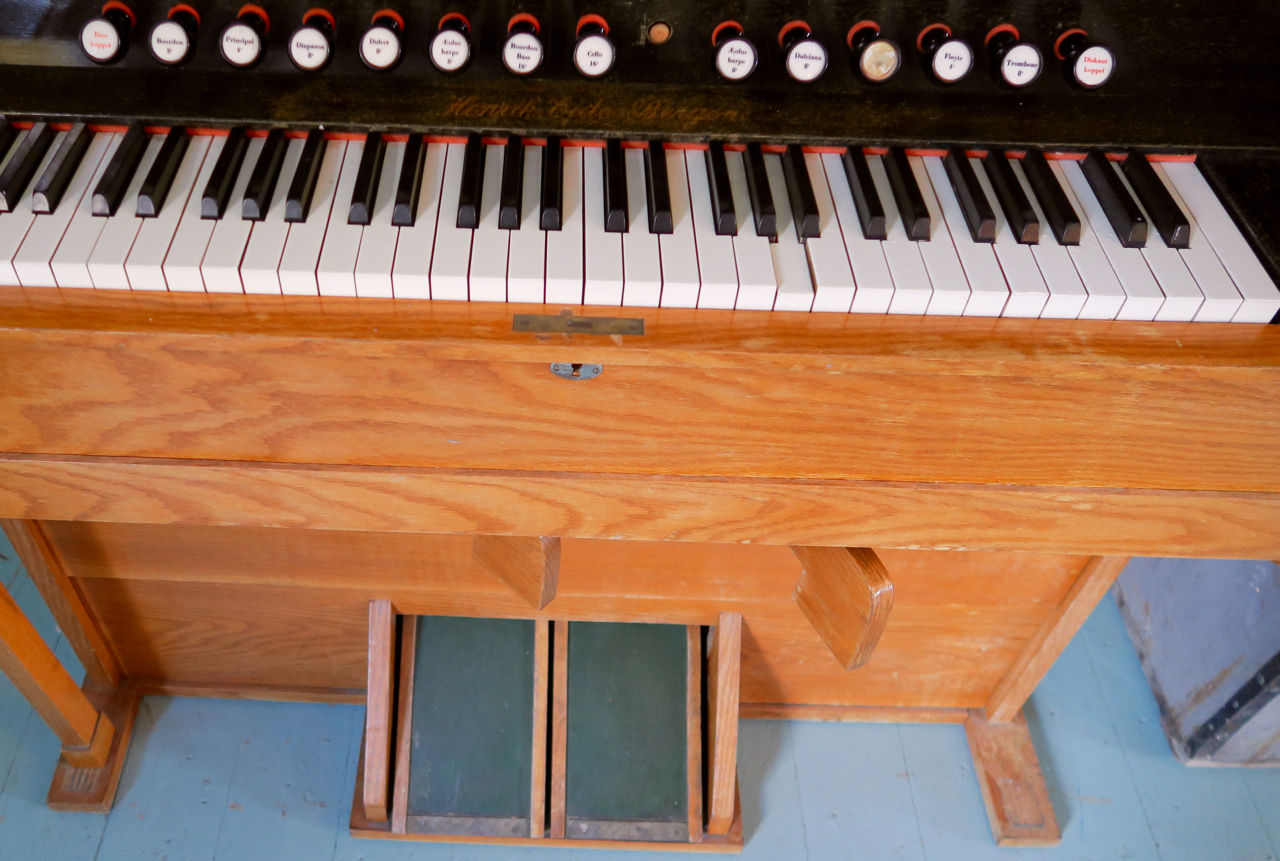
There were also some paintings for sale, and a wall poster was tacked up to show the different types of fish you could see in the warmer, non-rainy days.
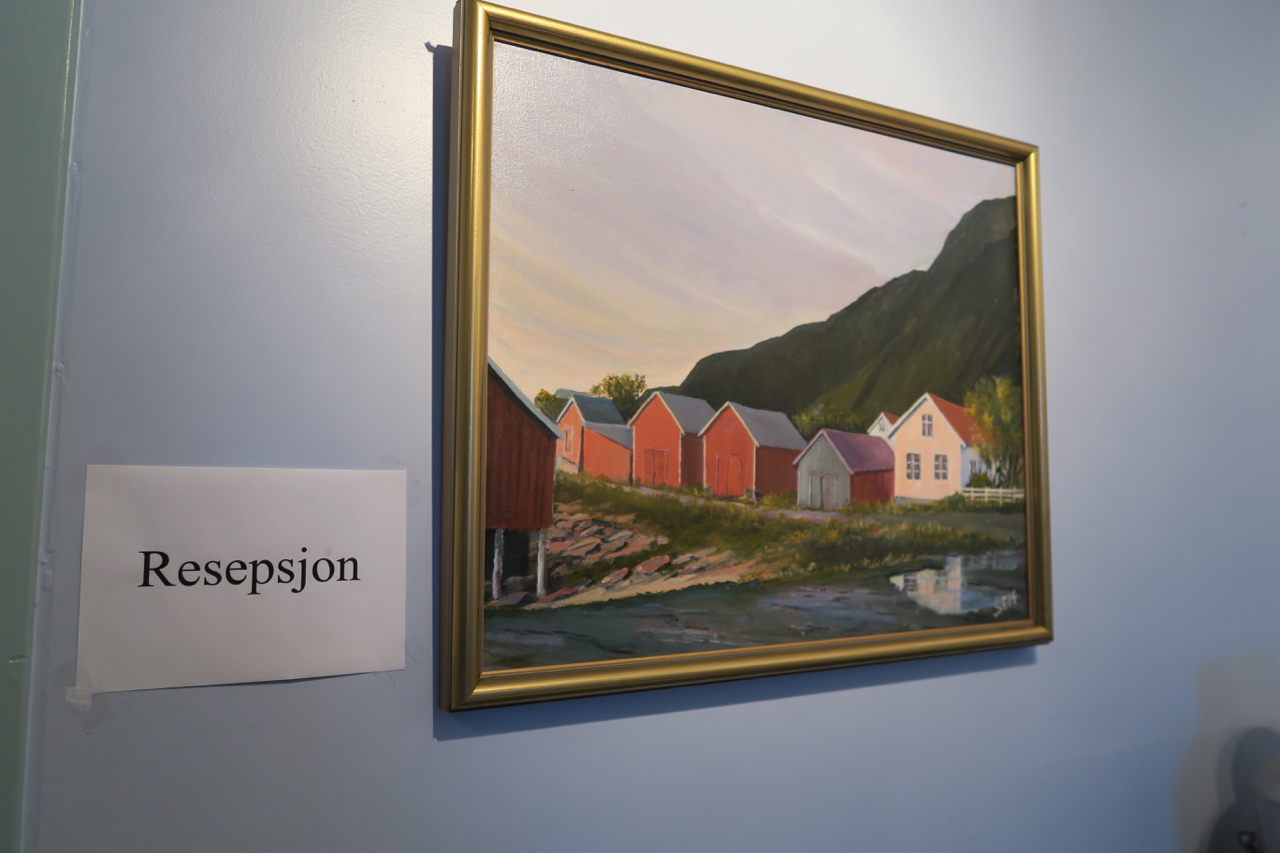

The owner was welcoming and friendly, and offered several different cabins to choose from. Even though traditional rorbu are positioned on the water, some newer ones are solely on land but clustered together with those on the water. We picked a traditional one that had two bedrooms, two stories and a “jacuzziâ€.
He explained how to get to the cabin, and asked if we wanted to have dinner as well? It would be right there, in the dining room. The dining room looked charming, and we hadn’t brought any food with us. There was the option of going to a restaurant, but we all preferred the idea of eating in the dining room.
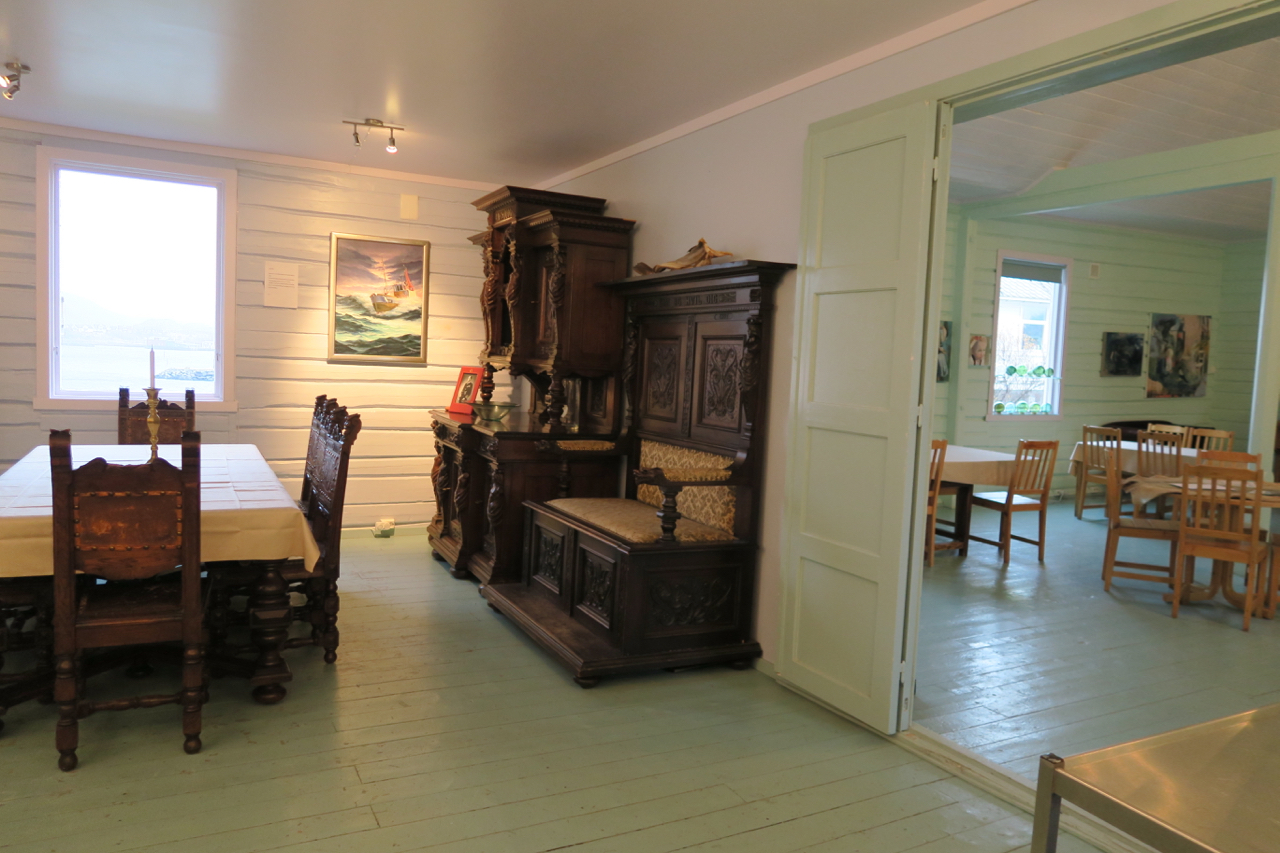
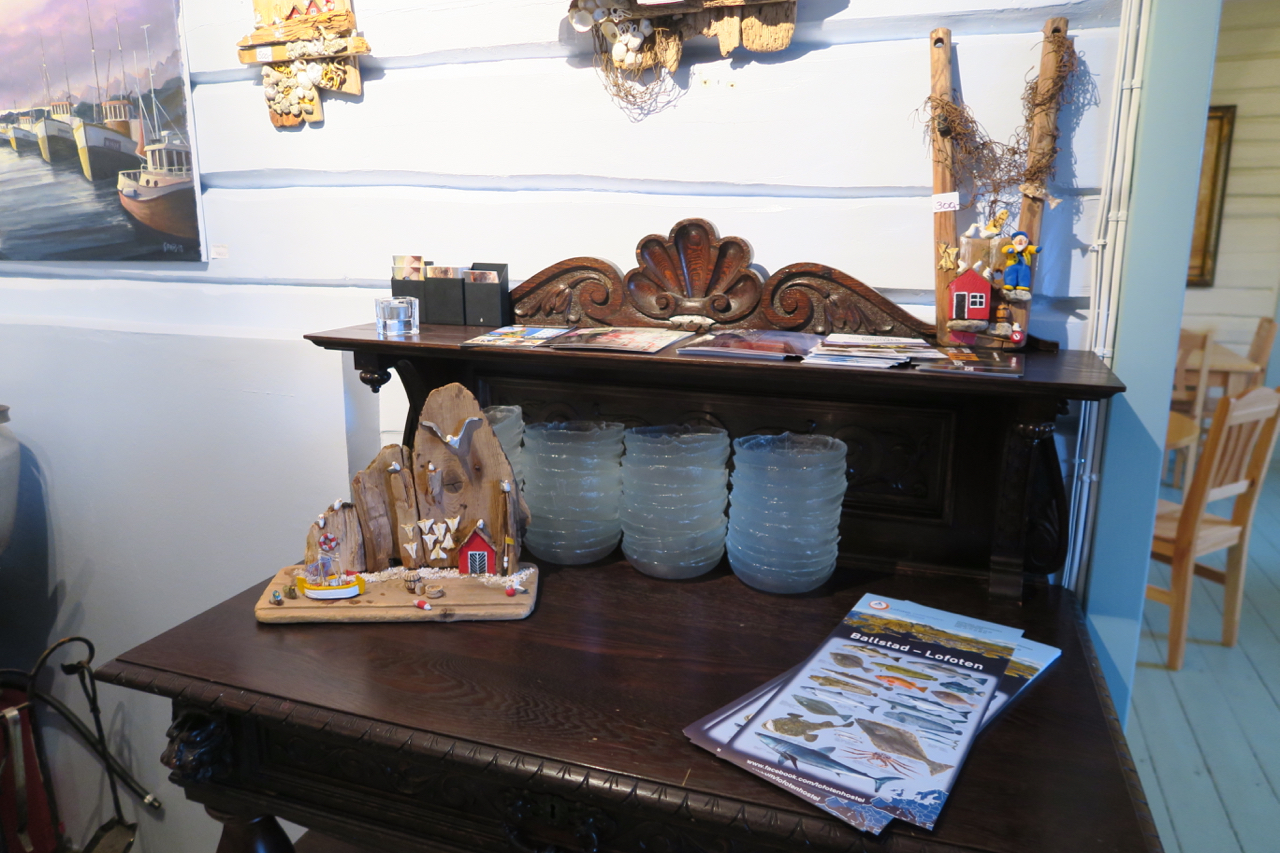
I saw a shelf the held a lot of books, and a traveler that read Norwegian might have been tempted to spend a rainy evening curled up in one of the chairs with a good read. Since I don’t read Norwegian though and my stomach was making hungry sounds I turned my attention back to food.
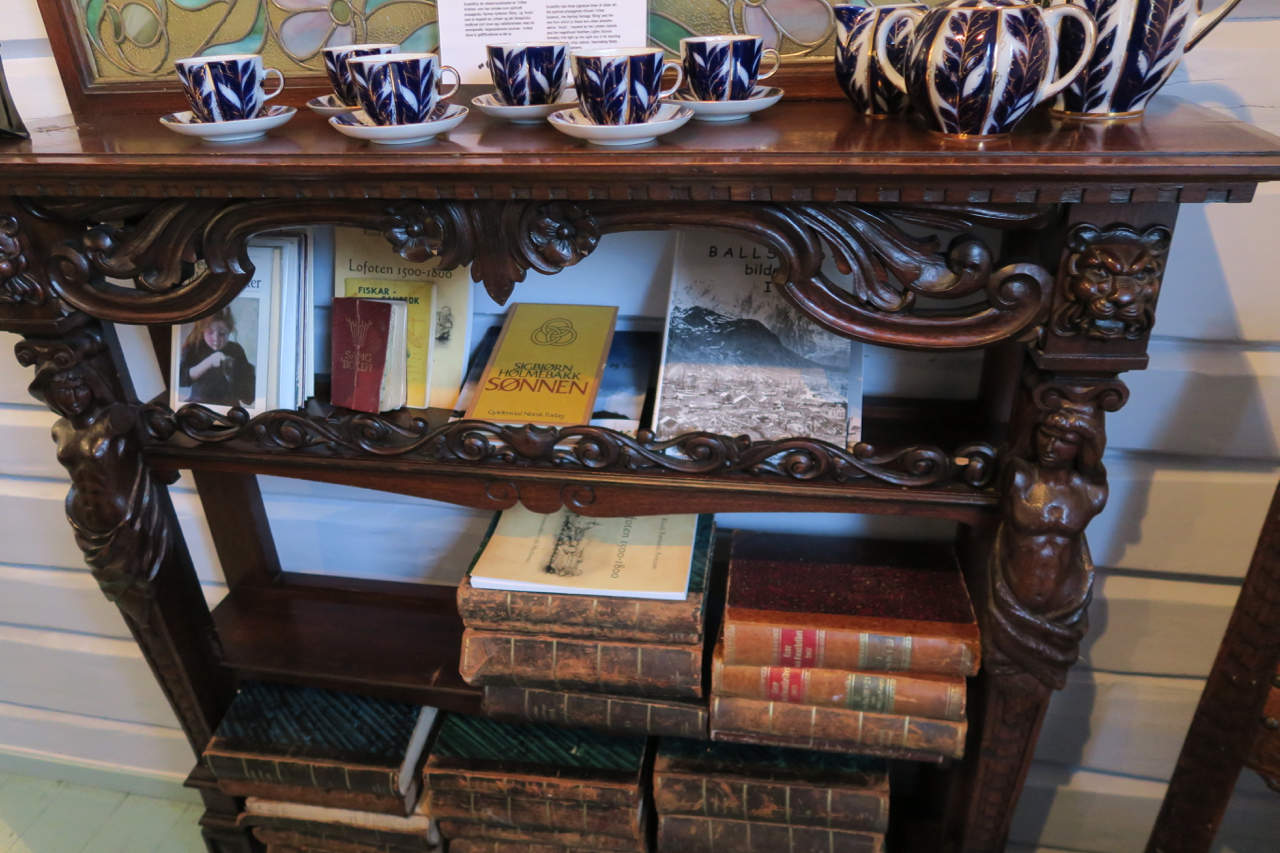
The price would be 500 NOK (about 60 USD) total for dinner for 3 plus 1 beer. We tacked it on to have it included with the room cost. The owner asked what time we wanted to eat, and we ventured 6:30? Perfect timing, as we could go to the cabin, drop off our stuff, get freshened up and return back in time for dinner.
The cost came out to 1400 NOK total (about 166 USD) for the cabin, plus 100 NOK for linens since some people bring their own. He told us how the lockbox worked and we were on our way.
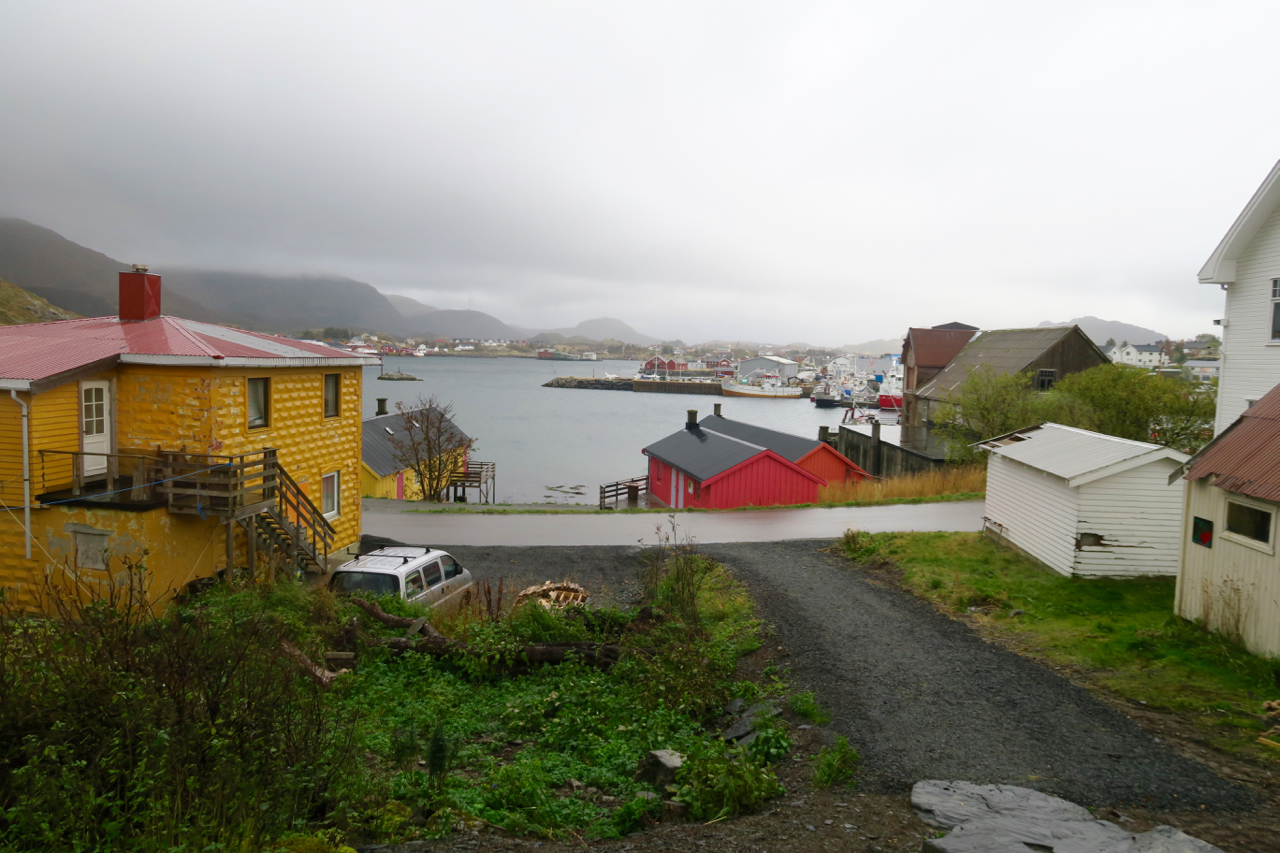
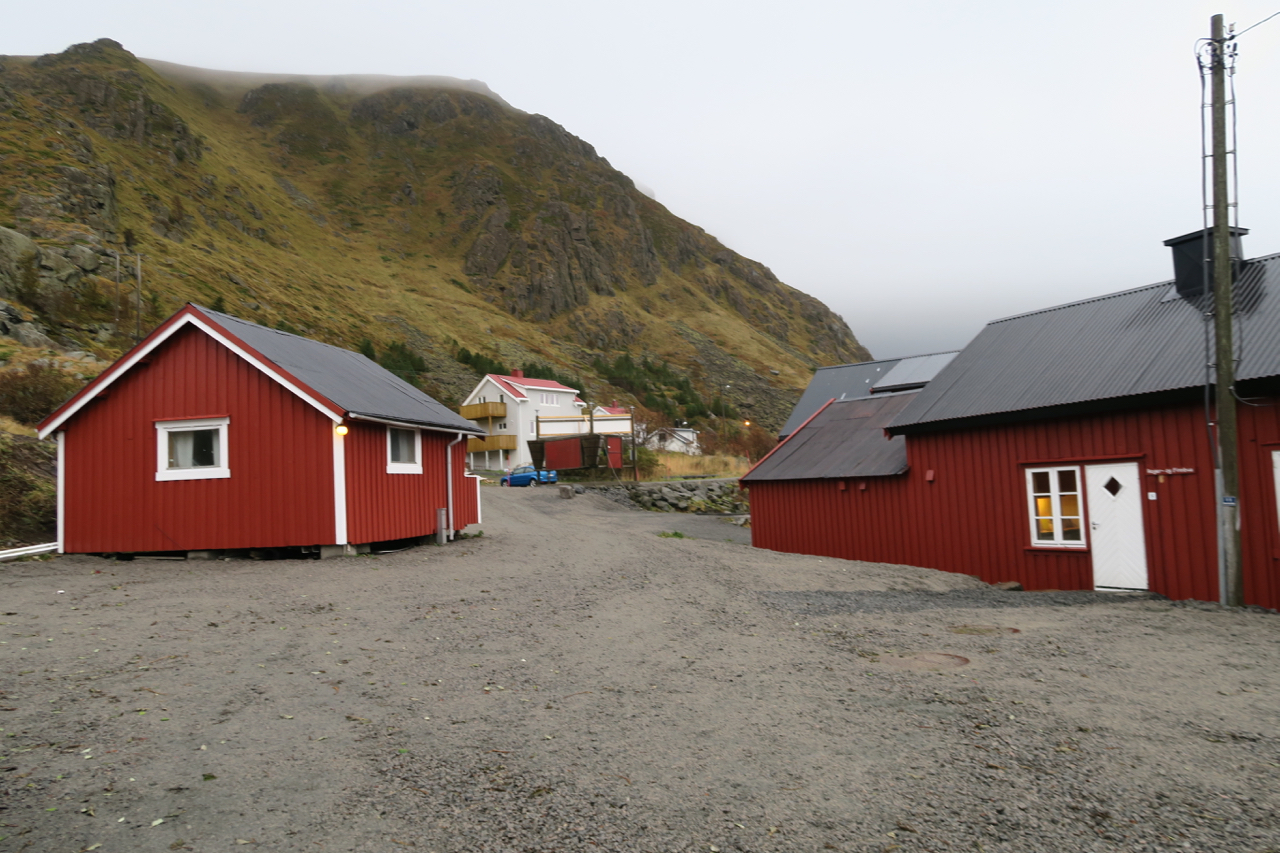
We drove down the street, parked, and then the path down to the cottages was just a little to the left. We passed several small buildings before coming to rest at the end of the road.


Going on by foot we passed one more cabin on the path before coming to ours, #15.
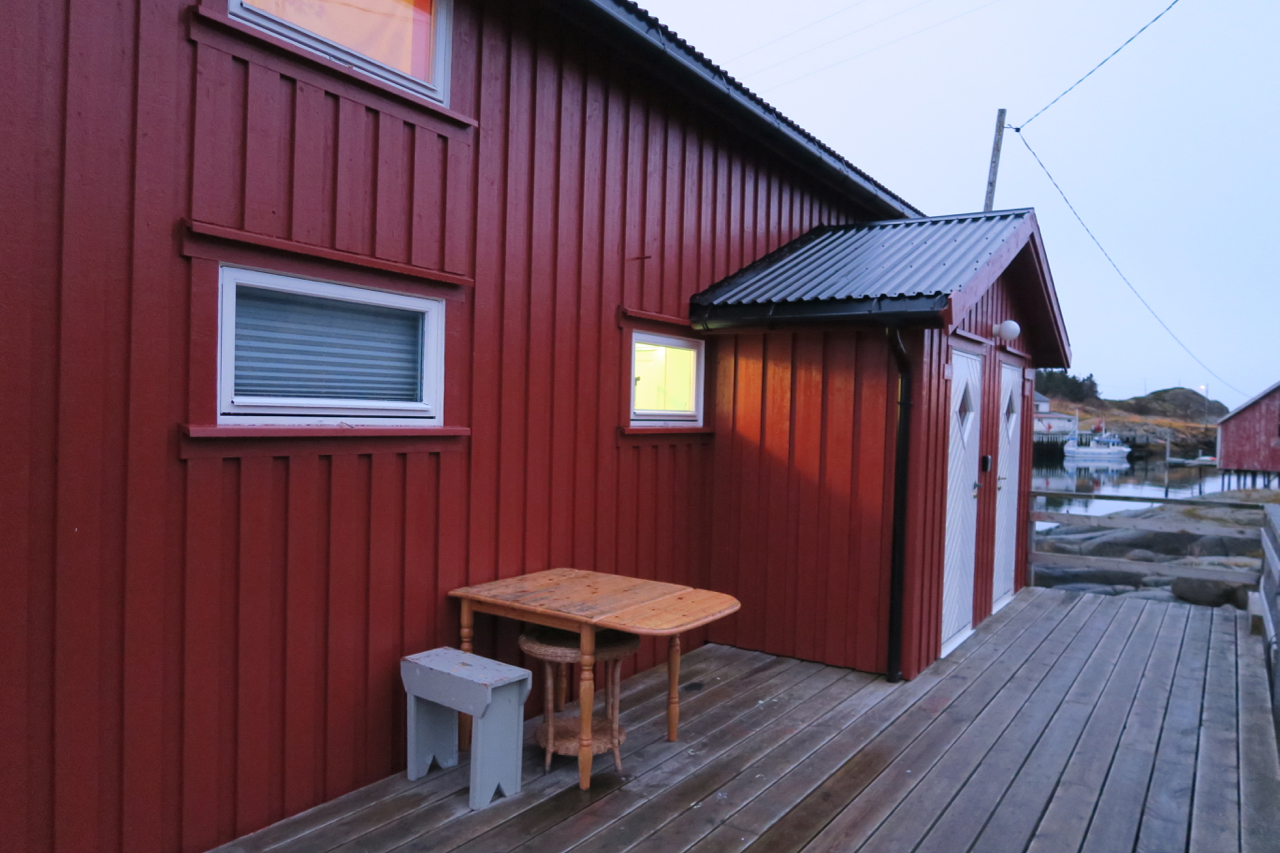
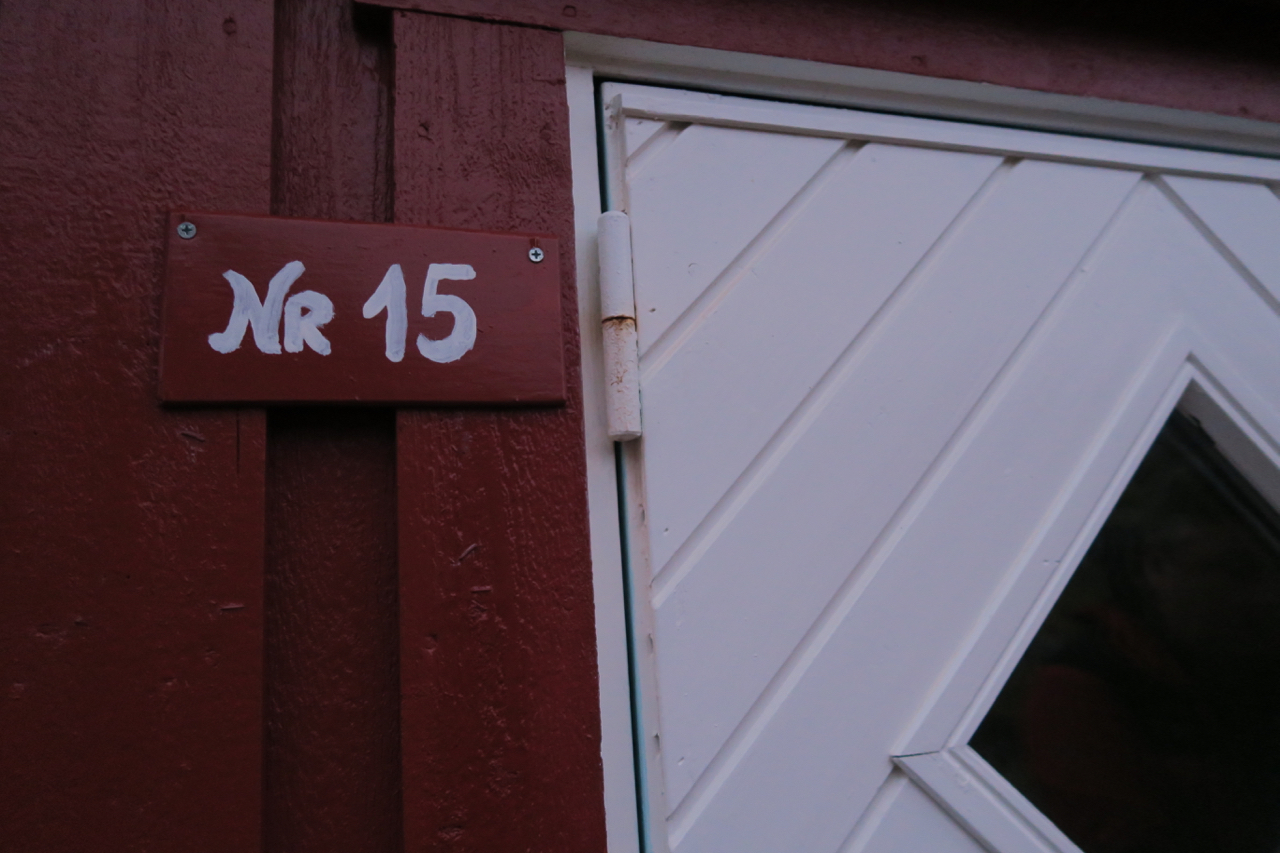
Come along with me as I venture inside and spend the night!
